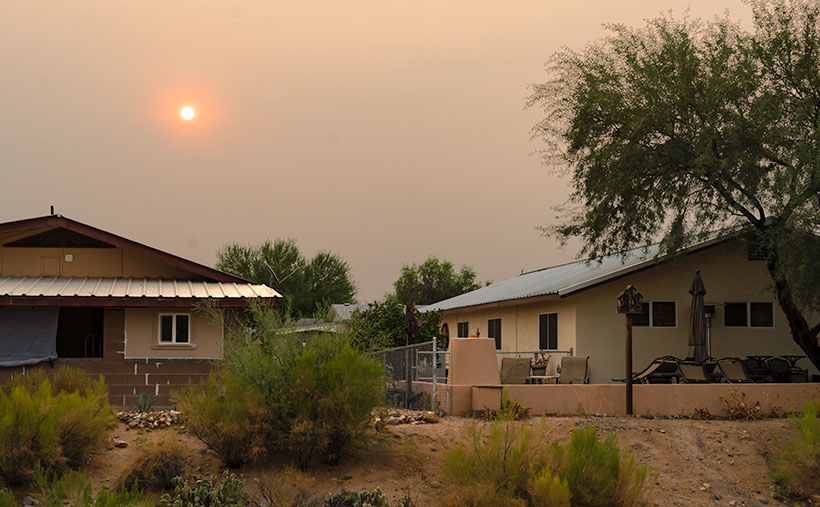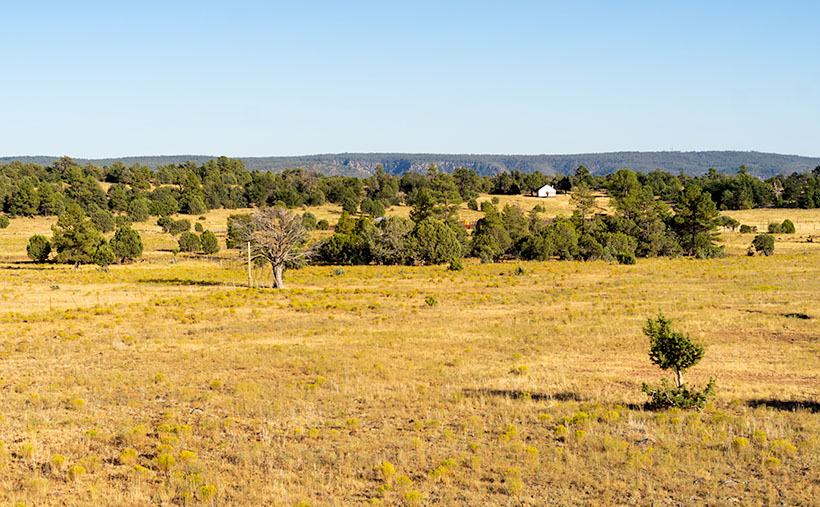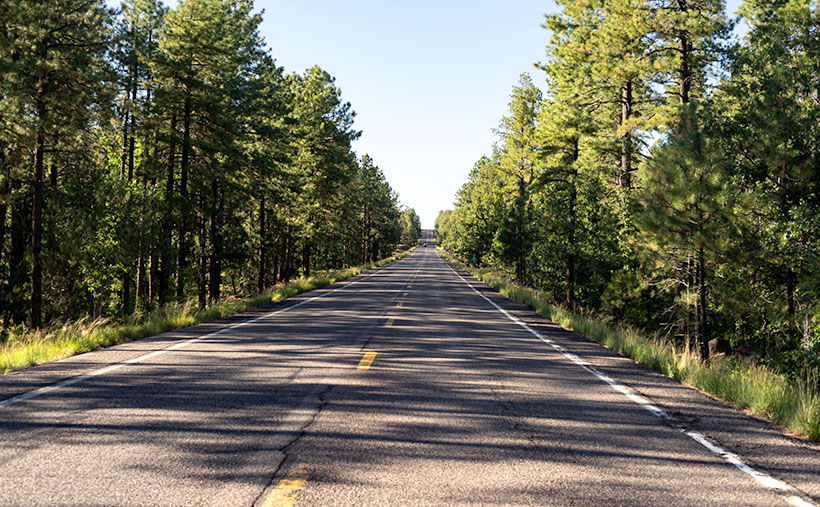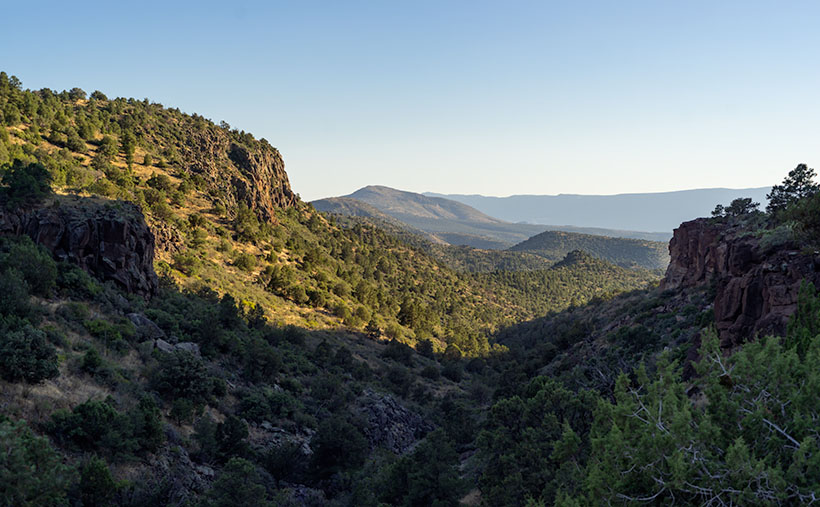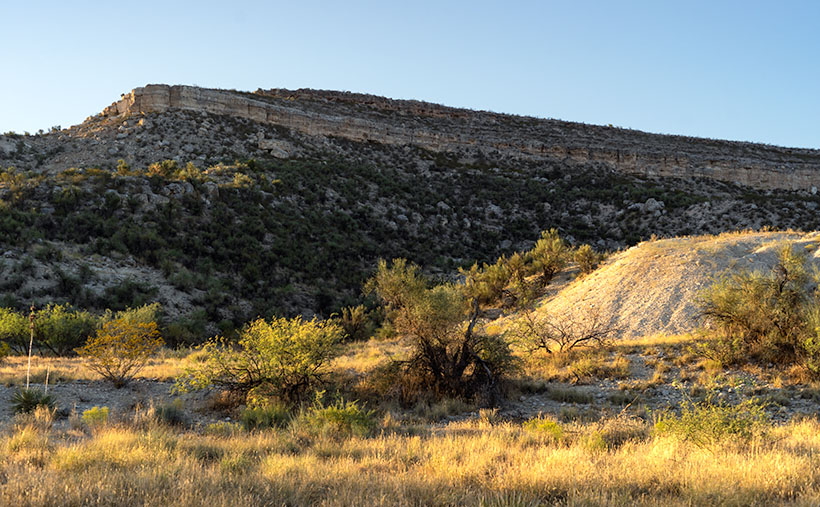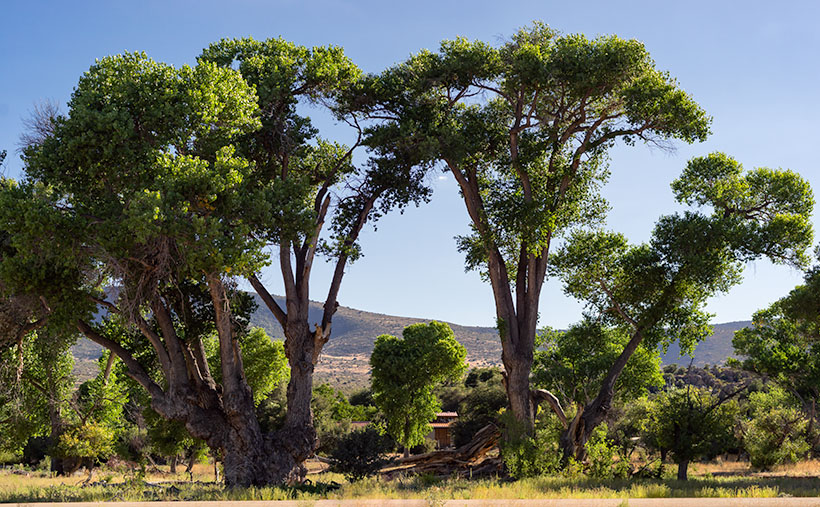There’s nothing rare or unusual about the organ pipe cactus. They’re a common sight in the Mexican states of Sonora and Baja. I’m sure that the local folks view them the way Zonies do the saguaro; they’re just another part of the local landscape. But, the saguaro’s smaller cousin only reaches into the United States in the national monument that’s a half-hour south of Ajo, and that’s what makes them special to us.
Like the saguaro, the organ pipe grows best on south-facing rocky slopes of the Sonoran Desert. So why don’t they grow further north? Well, that’s because they’re less tolerant of frost and won’t survive a hard freeze. The specimens that we have in our cactus garden have to wear styrofoam cup hats to get through even our mild winter nights.
Another difference between the columnar cacti is obvious by looking at them. The giant saguaro grows with a single trunk and sprouts arms after it reaches 50 years—like a tree. On the other hand, the organ pipe’s arms sprout from a stem close to the ground resembling a bush. Internally, their structures are similar to porous skeletons that allow the flesh to expand and store water.
While the saguaro and organ pipe’s flower looks the same, the latter’s are only open at night and are pollinated by bats. The saguaro keeps its flowers open in the day, which lets bees and doves help the pollination. Like the saguaro, the organ pipes produce fruit during the rainy season about a tennis ball’s size. The flesh is bright red and supposedly tastes better than watermelon. After eating the sticky fruit, birds disperse the seeds by defecating from the branches of palo verde trees.
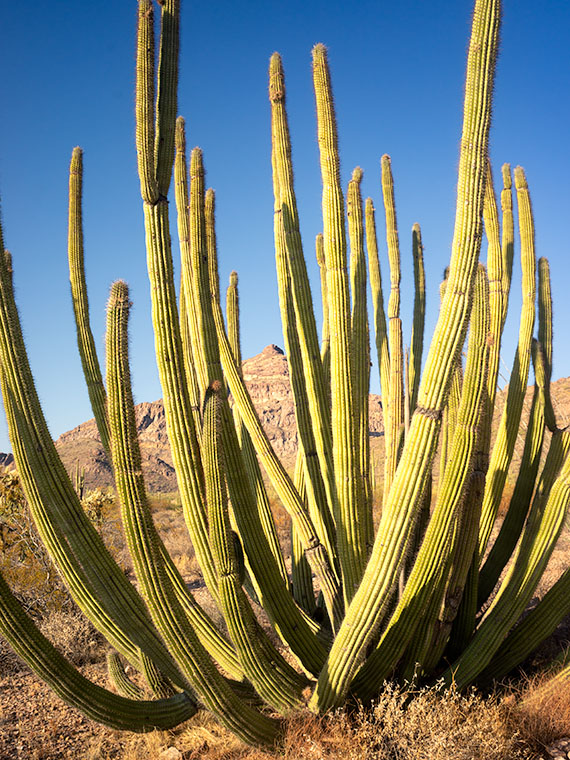
I drove a good distance on the Ajo Mountain Loop looking for a really nice organ pipe to photograph for this week’s featured image. The specimen in my image—called Organ Pipe Cactus—is a beaut, resembling an upside-down octopus on steroids. I’m a little upset that Ajo Mountain snuck in and photo-bombed my picture. At least you can see how far I traveled by how the mountain’s angel changed from last week’s photo. My references say that an organ pipe’s normal height is 10 to 16 feet, but this baby towered over my head and may have reached 20.
You can see a larger version of Organ Pipe Cactus on its Web Page by clicking here. Next week’s stop resulted in a surprise photo op. Be sure you come back and see what I found.
Until next time — jw

